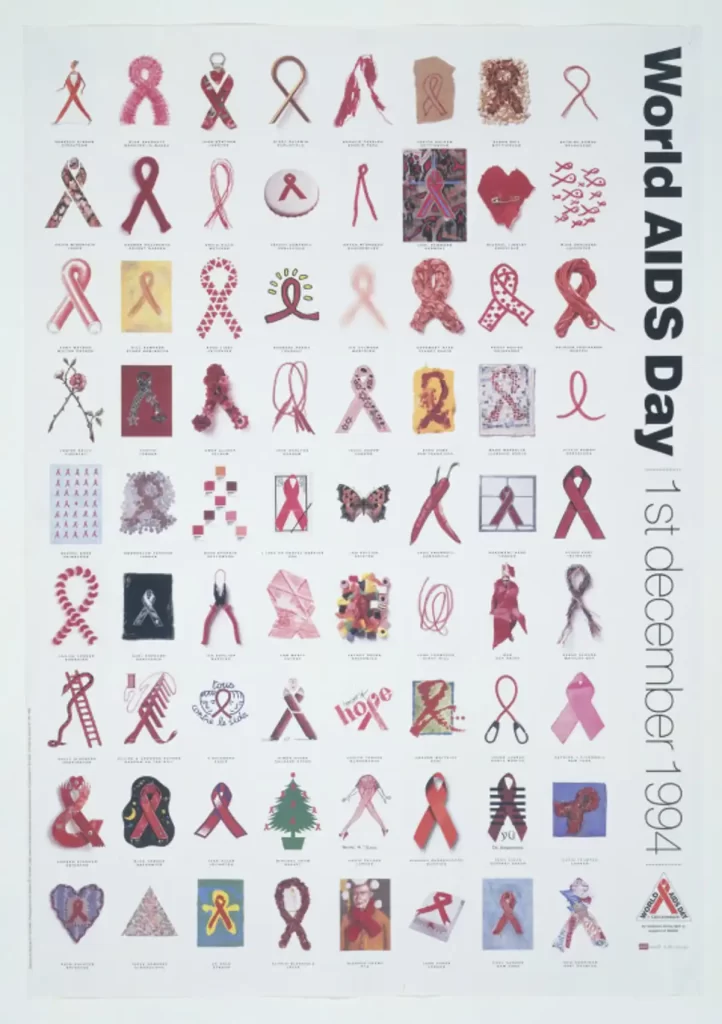– Andre Gennie
The Symbolism of the Red Ribbon in AIDS Awareness Campaigns
If you’ve recently come across hordes of masses wearing a small red ribbon on their lapels, and were curious about its nature, you’ve come to the right place. We just passed through 1st December, also known as World’s AIDS Day; a day aimed at raising awareness about the causes, symptoms, and preventative measures to curb HIV-AIDS. But why was this small red ribbon chosen to represent a cause so big?
What does the Red Ribbon Represent?
The red ribbon carries a myriad meaning. To some, the colour red recalls passionate love and affection (rarely shown to people with this chronic disease), while to the others, it symbolises the helplessness of the ill. It may as well represent blood colour, as it is the most common reason for the viral transmission. The red ribbon stood for care, hope, and support.

The symbol was neither used for commercial purposes nor trademarked, to proliferate the message of compassion without bounds. The ribbon was chosen for its ease of wear and replication. The original instructions for wearing the ribbon reads, “Cut the red ribbon to a 6-inch length, then fold at the top into an inverted ‘V’ shape.”
When Was the Red Ribbon Created?
The 1980s was a tumultuous time. It was then that there was a global spike in HIV cases. At the time, there was only one repercussion of the disease – untimely death. The disease was attributed to the queer community, which added to further ostracization. To curb these factors, a group was formed in 1988, known as Visual AIDS Artists’ Caucus. It entailed artists and art institutions.

After months of meetings in April-May 1991, the red ribbon symbol was officially created to memorialise the masses with AIDS. It came to signify compassion towards the patients and their caregivers. They were influenced by the yellow ribbon, worn by the American troops going to the Gulf war. The rainbow and pink colours were also considered. However, since their close association with the LGBT community, they weren’t adopted, to showcase that the disease went beyond mere gender and orientation.

Since its inception, thousands of Artists’ Caucus members, friends, and supporters came together at “ribbon bees” to cut, fold, and pin red ribbons for distribution across the country. When the demand for the red ribbons became greater, other organizations were enlisted to help. For example, artists Frank Moore and Hope Sandow started the Armory Ribbon Bee Project, which paid homeless women at the Park Avenue Shelter once a week to make tens of thousands of ribbons.
The Journey of the Red Ribbon
The design birthed the first ever Red Ribbon Project. The project in collaboration with Broadway Cares and Equity Fights AIDS distributed red ribbons to the 1991 Tony awards attendee, out of whom actor Jeremy Irons (who was presenting an award) was seen sporting one. The televised event was seen by many, and the symbol was quickly adopted as the international symbol for HIV-AIDS awareness.

The following year, over 100,000 red ribbons were distributed to the audience present at the Freddie Mercury Tribute show at the Wembley Stadium. This show was seen in more than 70 nations, further disseminating the message. Later, it became a major phenomena as Princess Diana advocated for AIDS and its impending affirming care.

On World AIDS Day 2007, Steven M. Levine, a communications assistant in President George W. Bush’s administration suggested that the administration place a 28-foot (8.5-meter) AIDS red ribbon on the White House’s North Portico to represent the country’s commitment to fighting the global AIDS epidemic. It has since become an annual tradition across four administrations.
Legacy of the Red Ribbon
The red ribbon was the first “awareness ribbon” of its kind, which became an example of many more to come. The United States Postal Service introduced a 29¢ Red Ribbon stamp in 1993. In its 1992 ceremony, the CFDA recognized the red ribbon’s design and implications. It was also featured in the 1997 exhibitions ‘Humble Masterpieces’ at the Museum of Modern Art and ‘Design for Life’ at the Cooper-Hewitt National Design Museum. In 2015, it became a part of MoMa’s permanent collection.

Image Courtesy – Psychology Today

Hi Ya’ll !!
I love writing about pop culture and all things queer.
Sub Editor at Abir Pothi





